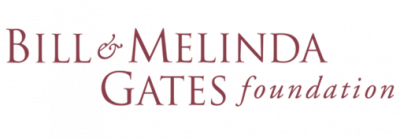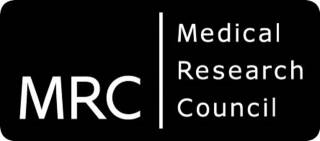 Piglet Asphyxia-Inflammation Model for Neuroprotective Therapies (PAINT)
Piglet Asphyxia-Inflammation Model for Neuroprotective Therapies (PAINT)

John Barks University of Michigan
The burden of disease for NE is disproportionately high in low-and mid-income countries (LMIC), particularly in Sub-Saharan Africa, where perinatal infection and inflammation are independent risk factors (Tann, CJ et. al. 2018). As Inflammation-sensitisation exacerbates brain injury in preclinical studies, we developed an LPS-sensitised hypoxia-ischaemia (IS-HI) piglet model (Martinello, KM et. al. 2019), shown to be associated with increased mortality and more severe brain injury. The safety and efficacy of HT in IS-HI remains unclear, whilst neuroprotective therapies are urgently needed in LMIC.
The Piglet Asphyxia-Inflammation Model for Neuroprotective Therapies (PAINT) study is a preclinical study funded by the Bill and Malinda Gates Foundation as part of an international drug pipeline development collaboration to evaluate the safety and efficacy of 3-5 agents which may be applicable for use in low-and mid-income countries (LMIC) for infants with NE. One agent under investigation, in collaboration with Professor John Barks at the University of Michigan is azithromycin, repurposed for neuroprotection via its immunomodulatory properties.
Key Publications:
Martinello KA, Meehan C, Avdic-Belltheus A, Lingam I, Mutshiya T, Yang Q, Akin MA, Price D, Sokolska M, Bainbridge A, Hristova M, Tachtsidis I, Tann CJ, Peebles D, Hagberg H, Wolfs TGAM, Klein N, Kramer BW, Fleiss B, Gressens P, Golay X, Robertson NJ. Hypothermia is not therapeutic in a neonatal piglet model of inflammation-sensitized hypoxia-ischemia. Pediatr Res. 2021 May 28:1–12. doi: 10.1038/s41390-021-01584-6. Epub ahead of print. PMID: 34050269; PMCID: PMC8160560.
Robertson NJ, Nakakeeto M, Hagmann C, Cowan FM, Acolet D, Iwata O, Allen E, Elbourne D, Costello A, Jacobs I. Therapeutic hypothermia for birth asphyxia in low-resource settings: a pilot randomised controlled trial. Lancet. 2008 Sep 6;372(9641):801-3. doi: 10.1016/S0140-6736(08)61329-X. PMID: 18774411.
Hassell J, Tann C, Idro R, Robertson NJ. Contribution of perinatal conditions to cerebral palsy in Uganda. Lancet Glob Health. 2018 Mar;6(3):e248-e249. doi: 10.1016/S2214-109X(18)30041-X. PMID: 29433660.
Tann CJ, Nakakeeto M, Willey BA, Sewegaba M, Webb EL, Oke I, et al. Perinatal risk factors for neonatal encephalopathy: an unmatched case-control study. Arch Dis Child Fetal Neonatal Ed. 2018;103(3):F250-F6.
Martinello KA, Meehan C, Avdic-Belltheus A, Lingam I, Ragab S, Hristova M, et al. Acute LPS sensitization and continuous infusion exacerbates hypoxic brain injury in a piglet model of neonatal encephalopathy. Sci Rep. 2019;9(1):10184.
 Cooling And MELatonin in LPS-sensitIzed Birth Asphyxia (CAMELLIA)
Cooling And MELatonin in LPS-sensitIzed Birth Asphyxia (CAMELLIA)

We have previously established that intravenous, high-dose melatonin is safe and augments cooling in the piglet model of HI (Robertson, NJ et. al. 2013, 2019, 2020). As IS-HI exacerbates brain injury and the therapeutic benefit of HT remains uncertain, therapies for IS-HI are urgently needed. The CAMELLIA study is funded by Wellbeing of Women aims to evaluate melatonin as a single agent neuroprotective therapy and as an adjunct to HT for IS-HI. We further aim to assess the safety and efficacy of HT in IS-HI.
 INSTINCT Study: Intranasal Stem Cells for Improving Neurodevelopmental Outcomes in Neonatal Encephalopathy
INSTINCT Study: Intranasal Stem Cells for Improving Neurodevelopmental Outcomes in Neonatal Encephalopathy

Our primary aim is to assess neuroprotective effects of intranasal (IN) human umbilical cord stem cells (huMSC; clinical grade, manufactured at UCL) in a neonatal model with and without therapeutic hypothermia using aEEG, MRS and neurodevelopment as safety and outcome measures prior to early phase clinical trials.
The use of stem cells to successfully treat neonatal brain injury is emerging as a promising therapy. Human umbilical cord mesenchymal stem cells (huMSC) self-renew and stimulate host brain cells to regenerate and repair, with superior anti-inflammatory properties than MSC from adult tissues. Importantly, although huMSC do not survive long term and replace damaged tissues themselves, they react to the needs of the ischemic cerebral environment by secretion of growth factors, cytokines and extracellular vesicles (EVs) to regulate damage and repair. These intrinsic adaptive properties of huMSC make them excellent candidates to treat the devastating effects of NE. The newborn brain is still in a developmentally active phase, leading to high efficiency of huMSC.
Our previous pilot study (Robertson et. al. 2020) using intranasal huMSC at 24 and 48h combined with HT after HI was associated with more rapid aEEG recovery, improved energy metabolism on 31P MRS, localised reduction in cell death in the internal capsule and improved oligodendrocyte survival.
Key Publications:
Robertson NJ, Meehan C, Martinello KA, Avdic-Belltheus A, Boggini T, Mutshiya T, et al. Human umbilical cord mesenchymal stromal cells as an adjunct therapy with therapeutic hypothermia in a piglet model of perinatal asphyxia. Cytotherapy. 2020.
Biomarkers for NE severity and outcomes
The large animal model provides an opportunity to establish biomarkers for injury severity and outcomes. We have shown in our piglet model that 1H MRS Lac/NAA peak ratio is a robust marker for histological global cerebral cell death and neuro-inflammation. We are also interested in investigating cytokines are potential markers of injury severity (Rocha-Ferreira et. al. 2017) and inflammation sensitisation (Lingam et al 2019). In the next 5 years, we hope to use high throughput metabolomic and proteomic analyses to identify the neurotoxic targets of effective neuroprotective agents. Our aim is to establish a panel of biomarkers to translate to the clinical setting to identify babies at the highest risk of long term disability who would most likely benefit from neuroprotective intervention.
Key Publications:
Rocha-Ferreira E, Kelen D, Faulkner S, Broad KD, Chandrasekaran M, Kerenyi A, et al. Systemic pro-inflammatory cytokine status following therapeutic hypothermia in a piglet hypoxia-ischemia model. J Neuroinflammation. 2017;14(1):44.
Lingam I, Avdic-Belltheus A, Meehan C, Martinello K, Ragab S, Peebles D, et al. Serial blood cytokine and chemokine mRNA and microRNA over 48 h are insult specific in a piglet model of inflammation-sensitized hypoxia-ischaemia. Pediatr Res. 202
Pang R, Martinello KA, Meehan C, Avdic-Belltheus A, Lingam I, Sokolska M, et al. Proton Magnetic Resonance Spectroscopy Lactate/N-Acetylaspartate Within 48 h Predicts Cell Death Following Varied Neuroprotective Interventions in a Piglet Model of Hypoxia-Ischemia With and Without Inflammation-Sensitization. Front Neurol. 2020;11:883.
 Close
Close

